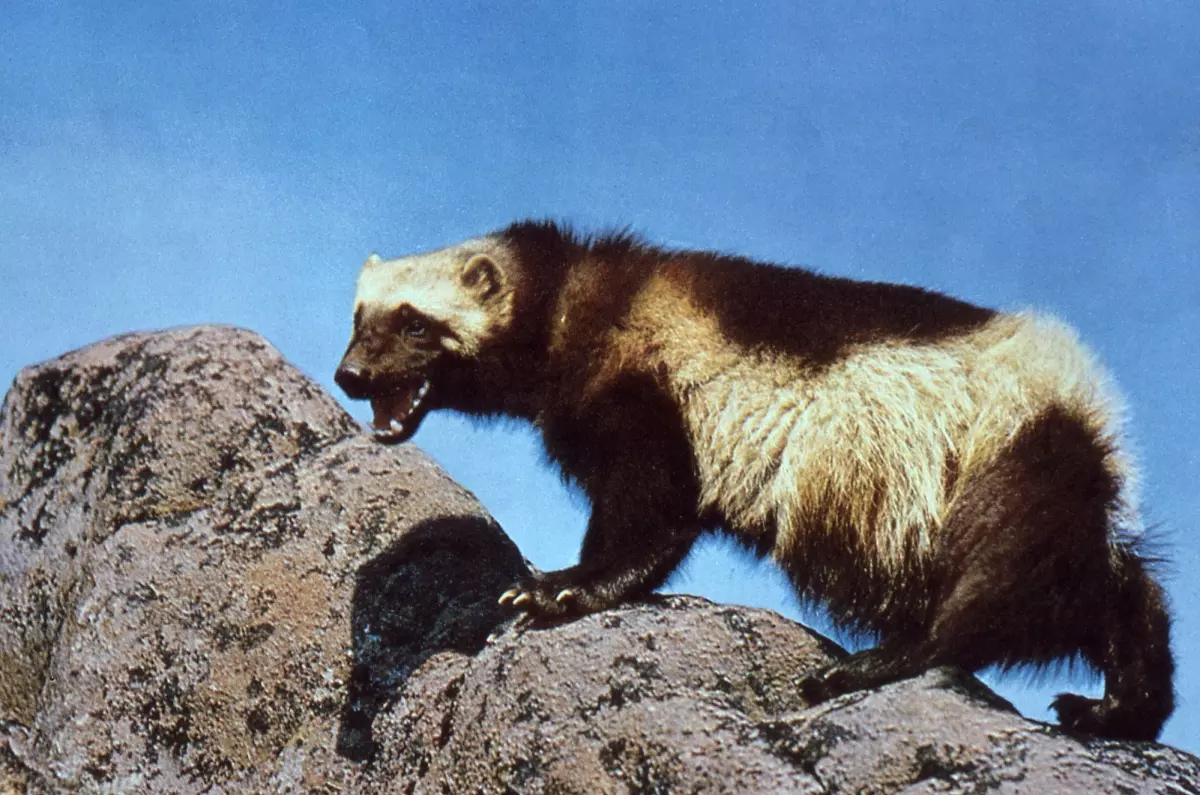By Glynn Wilson –
WASHINGTON, D.C. — A distinct population of the North American wolverine is set to be listed as a threatened species under the Endangered Species Act, according to the U.S. Fish and Wildlife Service, which is seeking public comments on the proposal indicating the species faces increasing threats from habitat degradation and fragmentation as well as climate change due to global warming from the burning of fossil fuels for energy and transportation.
The Service issued an interim rule on Wednesday making it unlawful to trap wolverines and published the notice for public comments in the Federal Register.
“Current and increasing impacts of climate change and associated habitat degradation and fragmentation are imperiling the North American wolverine,” Pacific Regional Director Hugh Morrison said. “Based on the best available science, this listing determination will help to stem the long-term impact and enhance the viability of wolverines in the contiguous United States.”
In September 2023, the Service updated its 2018 species status assessment for the North American wolverine with an addendum that reflects new information since 2018. The addendum evaluated updated information on climate change, habitat connectivity, trapping, snow, population density, and impacts on genetic diversity, as well as considered changes in regulatory mechanisms and conservation measures.
The North American wolverine is a medium-sized carnivore found within the Northern Rocky Mountains and North Cascade Mountains in the contiguous U.S. and alpine regions, boreal forests, and tundra of Alaska and Canada. Wolverines are snow-adapted, cold-climate, territorial animals with large home ranges.
In 2013, the Service proposed to list the North American wolverine in the contiguous U.S. as threatened under the ESA. In 2020, after reevaluating the wolverine’s status, the Service determined listing the wolverine was not warranted.
In 2022, however, the District Court of Montana vacated that decision, requiring the wolverine to be reconsidered for listing under the ESA.
As temperatures rise, the voracious carnivore, a bushy-tailed, round-eared creature, will lose much of the deep mountain snow it needs to dig its dens and protect its young during colder months, officials say.
“It’s unfortunate that it has taken this long,” said Andrea Zaccardi, an attorney at the Center for Biological Diversity, an advocacy group that petitioned to protect the animal. “There’s really no excuse for it.”
Once ranging from Maine through the Great Lakes to Washington state, the wolverine was nearly wiped out in the Lower 48 a century ago as farmers put out poison to protect livestock and as hunters depleted its prey, according to Jeff Copeland, a biologist and director at the nonprofit Wolverine Foundation.
The population has crept back up to around 300 in the northern portions of the Rocky and Cascade mountains, though robust populations persist throughout Canada and Alaska as well as in Russia and Scandinavia.
With large paws for trudging through snow and sharp teeth for biting frozen meat, wolverines consume just about anything they get their claws on — porcupines, beavers, rabbits and even the occasional moose. The wolverine has such a reputation for eating that it goes by the nickname “glutton.”
Though it looks a bit like a bear, the wolverine is actually part of the weasel family.
“They are a dangerous combination of ferocity and curiosity,” Copeland said.
Wolverines often live high in the mountains, away from people. But as temperatures go up because of human-caused climate change, wolverines will lose much of that secluded, snowy habitat, with nearly a quarter of it gone over the next 30 years and nearly two-thirds of it over the next 75 years, according to the wildlife agency.
“As global warming starts to move the snow line up the mountain, it begins to expose some of these wolverine dens,” Copeland said. “It’s one of the things I’ve always admired most about it,” he added. “It lives in these incredible rugged habitats.”
Among other pressures on wolverines are skiers and snowmobilers encroaching into their Alpine territory as well as an overall lack of genetic diversity. The question of whether the wolverine should be protected under the Endangered Species Act has gone back and forth between the agency and federal court system for years.
In 2013, the Obama administration proposed protecting the species in the Lower 48, but decided against going through with the protections the following year over uncertainty about the impact of climate change. After the Trump administration withdrew the proposed listing in 2020, environmentalists sued and a federal district court sent the decision back to the Fish and Wildlife Service for reevaluation.
Farmers and snowmobilers resisted past efforts to protect wolverines over concerns about the way the protections would restrict the way people can use land. Opponents noted that the species is doing fine north of the Canadian border.
Charles Yates, an attorney with the Pacific Legal Foundation, a conservative public interest law firm, said the government lacks the legal authority to split the Northern American population and protect only those wolverines in the Lower 48.
“Generally speaking, when a species is listed,” said Yates, “all manner of restrictions on ordinary land use” come into effect.
The Service requests comments or information from other concerned federal and state agencies, Tribes, the scientific community, or any interested party concerning the interim 4(d) rule. A 60-day comment period begins Nov. 30, 2023 and comments must be received by Jan. 29, 2024. The proposal and information on how to submit comments can be found here.
___
If you support truth in reporting with no paywall, and fearless writing with no popup ads or sponsored content, consider making a contribution today with GoFundMe or Patreon or PayPal. We just tell it like it is, no sensational clickbait or pretentious BS.














